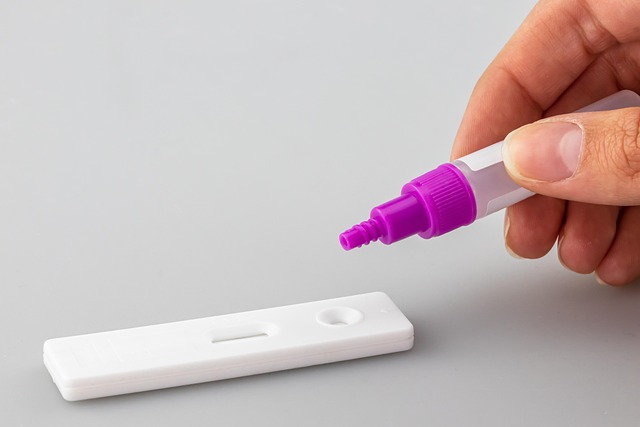
Product Testing Empowering Workplace Culture with Science and Tech
In today’s fast‑moving market, product testing is no longer a peripheral activity; it is a core driver of innovation, quality, and employee engagement. When testing practices are embedded in a company’s daily rhythm, they create a culture of curiosity, continuous improvement, and shared responsibility. This article explores how scientific rigor and emerging technologies combine to transform product testing into a catalyst for a healthier, more empowered workplace.
Science at the Heart of Product Testing
Scientific principles guide every step of the testing process, from hypothesis formation to data interpretation. By applying the scientific method, teams ensure that conclusions are evidence‑based rather than opinion‑driven. The key components include:
- Hypothesis formulation: Clear, testable statements that define expected outcomes.
- Controlled experiments: Isolation of variables to attribute changes to specific factors.
- Statistical analysis: Confidence intervals and p‑values help determine the significance of results.
- Reproducibility: Documentation and repeatability guarantee that findings are reliable across teams.
When these elements are woven into everyday workflows, they elevate testing from a compliance task to a systematic approach that drives product excellence.
Technology That Amplifies Scientific Rigor
Several technological advancements have made rigorous product testing more accessible and scalable:
- Automated test frameworks: Continuous integration pipelines run unit, integration, and regression tests automatically, ensuring rapid feedback.
- Simulation tools: Virtual environments model complex interactions, reducing the need for costly physical prototypes.
- Data analytics platforms: Real‑time dashboards highlight performance trends and anomalies, enabling quick decision making.
- AI‑driven test design: Machine learning algorithms identify the most critical test scenarios based on historical data.
These tools lower the barrier to entry for rigorous testing and free engineers to focus on creative problem solving.
Embedding Testing Into Workplace Culture
When product testing is treated as a cultural norm, it yields benefits beyond quality assurance:
“The best cultures treat every error as a learning opportunity, not a failure.”
By encouraging teams to view defects as data points, organizations foster a growth mindset. This perspective transforms the typical blame‑shifting environment into a collaborative atmosphere where feedback is constructive and continuous.
Trust, Transparency, and Empowerment
Transparent testing processes build trust among stakeholders:
- Open dashboards: Stakeholders can view real‑time test results, making decision making inclusive.
- Root‑cause analysis sessions: Cross‑functional workshops dissect failures, turning them into shared learning moments.
- Recognition of data‑driven contributions: Teams that champion evidence‑based solutions receive visibility and career advancement.
When employees see that their data insights influence product strategy, they feel valued and motivated to contribute more deeply.
Skill Development Through Testing
Product testing offers a fertile ground for skill growth across multiple disciplines:
- Statistical literacy: Engineers learn to design experiments and interpret confidence metrics.
- Automation proficiency: Developers build and maintain test suites that run at scale.
- Data storytelling: Product owners craft narratives that translate test metrics into business impact.
- Cross‑functional collaboration: Designers, QA, and operations align around shared quality goals.
Investing in these competencies not only improves product outcomes but also enhances employee satisfaction and retention.
Data‑Driven Decision Making in Practice
Consider a scenario where a fintech startup releases a new authentication feature. By running A/B tests with controlled user groups, the team measures success metrics such as error rates, login speed, and user satisfaction. Statistical analysis confirms that a streamlined UI reduces friction by 18%, while a secondary authentication layer improves security scores by 12%. These quantifiable insights guide prioritization, feature iteration, and marketing messaging, all grounded in objective data.
Case Reflection: From Bug Hunts to Innovation Labs
In a mid‑size consumer electronics firm, a dedicated “Bug Hunt” program turned the monthly sprint into a celebration of discovery. Engineers voluntarily participated in exploratory testing sessions, documenting unexpected behaviors. Each bug report fed into a shared knowledge base, which analysts mined for patterns. Over time, recurring themes surfaced—such as a particular sensor’s temperature sensitivity—that informed hardware redesigns and software mitigations. The initiative cultivated a sense of ownership and pride, reinforcing the idea that every team member could shape product quality.
Future Trends Shaping Product Testing
The intersection of science and technology continues to evolve, offering new pathways for workplace culture enrichment:
- Edge AI testing: Real‑world data feeds into edge devices, enabling on‑device validation and rapid iteration.
- Quantum computing simulations: Early adopters explore how quantum algorithms might affect product performance.
- Explainable AI in testing: Transparency in AI decision trees helps teams trust automated test outcomes.
- Holistic quality metrics: Integration of security, accessibility, and sustainability scores into a single health dashboard.
Organizations that proactively integrate these trends will position themselves as leaders in both product excellence and employee empowerment.
Conclusion: A Culture Fueled by Evidence
Product testing, when approached through the lens of scientific methodology and powered by modern technology, transcends its traditional role. It becomes a cultural engine that drives trust, collaboration, and continuous improvement. By treating every test as a conversation with data, companies unlock employee potential, elevate product quality, and create a resilient organization ready to thrive in an ever‑changing marketplace. The science is clear: evidence‑based testing leads to better products, and better products cultivate a workplace where people are empowered, respected, and inspired to innovate.



